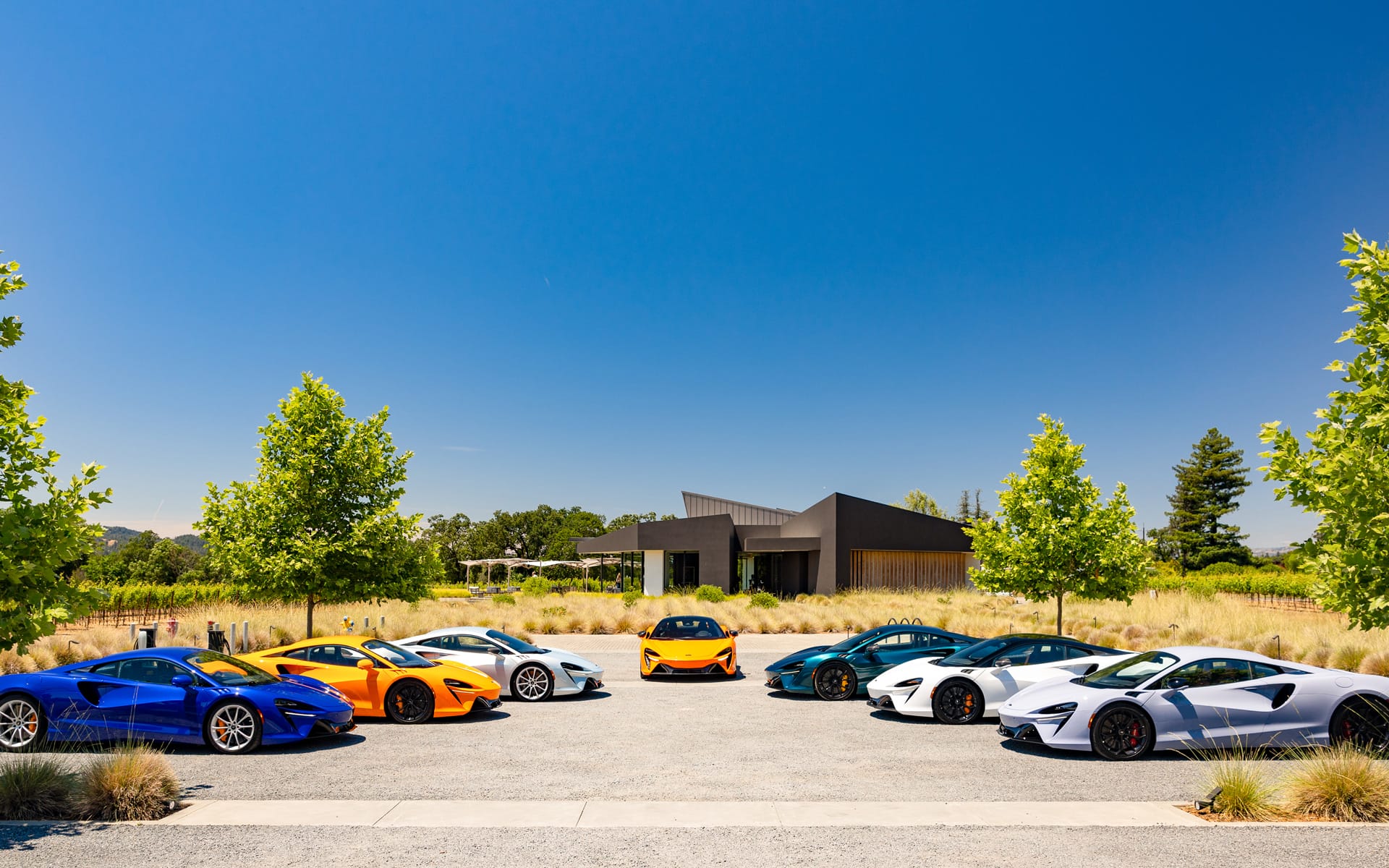McLaren Marks 60th Anniversary with a Sleek Generation of Hybrid Supercars
The most fuel-efficient McLaren yet, the Artura combines the forces of art and the future to bring high performance, style, and luxury to the road

This year marks the 60th anniversary of luxury carmaker McLaren, the only brand ever to receive the coveted triple crown in race car driving. In honor of the milestone, McLaren Automotive has launched the new 2023 high-performance hybrid supercar, the Artura, which combines the forces of art and the future to bring style and luxury to the roadways.
Keeping alive its tradition of lightweight engineering and innovative design, McLaren has introduced a versatile model that allows for winding drives in the mountains, coasting down the Pacific Coast Highway, and speeding through wide-open farmland. (There are three handling modes: comfort, sport, and track.) Notably, the Artura is the most fuel-efficient McLaren yet, with the ability to run emission-free for up to 11 miles—plus, it’s the first model hand-assembled in Surrey to utilize the new McLaren Carbon Lightweight Architecture.


The brand’s innovation starts with its materials, first being carbon fibre, where carbonized polymers are woven like a textile to create strong yet lightweight parts and accessories. A pioneer in carbon fibre, McLaren introduced a carbon fibre chassis into Formula 1 back in 1981. “It is the pinnacle of materials, we can’t really beat this material yet, but I wanted to push those boundaries,” explains Jo Lewis, McLaren Automotive’s Head of Colour & Materials Design.


With her degree from Central Saint Martins, background in fashion design with Stella McCartney, and 13 years of experience in automotive, Jo Lewis has an eye for design and engineering. During her tenure, Lewis has brought on innovations, such as McLaren’s cutting-edge NASA-developed materials used for the floor mats of the Artura, as well as a tightly knit cashmere used for the seats that increases durability while preserving the fabric’s allure.
“We look at things beyond what we know, including different industries and technologies, and that gives us the most interesting, exciting materials going forward,” says Lewis. To keep the Artura lightweight for peak performance, Lewis has created materials such as an aerated leather that reduces the weight of traditional leather, as well as a lithe ultra-fabric that is fully waterproof like a scuba suit.

The Artura has ideal supercar proportions, with pure lines and a “shrink-wrapped” look for maximum speed. The aerodynamic body adheres to the so-called “golden spiral,” meaning it’s impeccably structured for beauty and hand-painted and contoured like one would apply makeup to their face. The exterior paint emphasizes the geometry of the car and is available in 15 colors, including three new unique hues that launched with the vehicle.
In addition to the prearranged colors already available, the Artura can be customized with virtually any hue imaginable as a bespoke commission through McLaren. The car body can indeed be a canvas, as illustrated last year thanks to British artist Nat Bowen, who reimagined the Artura in a kaleidoscope of shapes and colors.

With the preset performance, tech-lux, and vision specs, McLaren offers customers the opportunity to add a more customized touch to their vehicles. Even the car’s jewelry can include a 24-karat gold badge, which was developed to withhold the 205 mph speeds the Artura can hit. “Our mission was to create a piece of pure technical sculpture, where technology doesn’t distract but enhances the visual experience,” explains Rob Melville, McLaren Automotive’s Design Director. “We don’t decorate, we do what is needed and make it beautiful.”